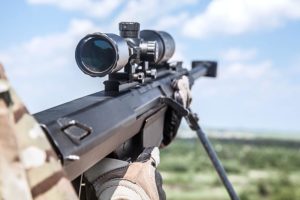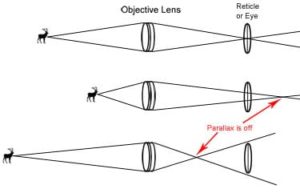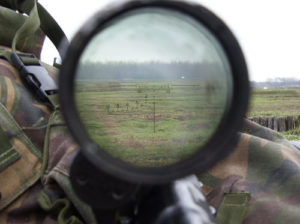Optics of A Long Range Scope Explained
 A lot of very avid hunters prefer to venture out into the woods using their long-range rifle so that they can avoid being noticed by wild animals. The thing is, it takes effort to be able to see a target that is a mile away, much less be able to hit it, unless you have the right scope to help you out. To get the most viewing range out of a scope though, you need to have a basic understanding of how they work and which ones are the best. Therefore, we have researched a lot of facts and numbers to put together all the information you need in one place. Are you ready to see the optics of a long range scope explained?
A lot of very avid hunters prefer to venture out into the woods using their long-range rifle so that they can avoid being noticed by wild animals. The thing is, it takes effort to be able to see a target that is a mile away, much less be able to hit it, unless you have the right scope to help you out. To get the most viewing range out of a scope though, you need to have a basic understanding of how they work and which ones are the best. Therefore, we have researched a lot of facts and numbers to put together all the information you need in one place. Are you ready to see the optics of a long range scope explained?
How Does a Long-Range Scope Work?
 When you pick up a rifle that is capable of firing over a long distance, you will have a lot of different things to consider before firing. There are variables that you will have to take into consideration that will change where your bullet actually hit. You have to learn how to aim here to hit there, knowing that gravity will function no matter how fast the bullet travels forward. Other factors may also come into play. They include the weather, since heavy or moist air could make the bullet drop faster and whether the air is thin or not, as you may find in higher elevations. A reliable scope can help you get beyond the issues, but even with a scope, you need to be aware of the changes your bullet will go through as it travels and how to set up your scope to function properly.
When you pick up a rifle that is capable of firing over a long distance, you will have a lot of different things to consider before firing. There are variables that you will have to take into consideration that will change where your bullet actually hit. You have to learn how to aim here to hit there, knowing that gravity will function no matter how fast the bullet travels forward. Other factors may also come into play. They include the weather, since heavy or moist air could make the bullet drop faster and whether the air is thin or not, as you may find in higher elevations. A reliable scope can help you get beyond the issues, but even with a scope, you need to be aware of the changes your bullet will go through as it travels and how to set up your scope to function properly.
Scopes and Long-Range Viewing
 One of the biggest things you will have issues with on a long range scope is the parallax knob. It isn’t so much a difficult thing to use as it is confusing for many who want to aim at targets that are long distances away. Figuring it out could increase your success rate because the parallax puts your focal plane off from the reticle. However, it does not change the focus or the reticle. It simply helps you to adjust your gaze and if the reticle seems to move when you shift your gaze, it needs to be adjusted. If it is adjusted properly for your target area, the reticle will appear to be locked into place on the target, as if it is a part of the target. Scopes also allow you to adjust the height and stuff that make it easier for you to hit your target area. If you are looking for a good, scope you may consider taking a look at a list of the best long range rifle scopes for the money on Long Range Scopes.
One of the biggest things you will have issues with on a long range scope is the parallax knob. It isn’t so much a difficult thing to use as it is confusing for many who want to aim at targets that are long distances away. Figuring it out could increase your success rate because the parallax puts your focal plane off from the reticle. However, it does not change the focus or the reticle. It simply helps you to adjust your gaze and if the reticle seems to move when you shift your gaze, it needs to be adjusted. If it is adjusted properly for your target area, the reticle will appear to be locked into place on the target, as if it is a part of the target. Scopes also allow you to adjust the height and stuff that make it easier for you to hit your target area. If you are looking for a good, scope you may consider taking a look at a list of the best long range rifle scopes for the money on Long Range Scopes.
Do You Really Need That Scope?
Scopes are beneficial for long range target shooting and hunting at distances. To know whether you need one scope in particular or not, you must also understand that some scopes have a limit to their “sight” distance. One example is that a 3.5x will allow you to see in wooded areas and a 10x will allow you to see for distances up to around 400 yards. If you have a 25x, you will be able to view further away, but if your deer is at 100 yards, you will only be able to see their face. This means that if they move, you may miss your shot. Some scopes will be higher or lower rated and you will have to figure out what may work best for you before you purchase.